With the launch of the new Advanced Amateur model expected this week, everyone in the Minolta A-mount world is holding their breath to see what Sony will finally unleash on the dSLR world. There are all manner of rumors, some which sound plausible, others that are so far-fetched they make Roswell and the UFO “coverup” seem mainstream in comparison,
Will Advanced Amateur dSLR finally get a name?
One thing we do know, the Advanced Amateur model will finally have a name, and it will offer a number of features not available in the A100.
I really like the A100. It is a good, even excellent, dSLR for many applications. All cameras have flaws however, and the A100 suffered somewhat as Sony’s initial foray into the digital SLR market. It inherited some limitations from the Maxxum 5D, and Sony may have erred in some respects in creating their first dSLR entry. One thing is for sure, however. Sony has been paying close attention to the A100 critics. I expect the Alpha AA release — whatever it is finally called — will offer many improvements based on real or imagined problems with the A100.
Here is my guess about which flaws Sony will correct with the new AA model:
How well as Sony been listening?
1: Lack of a vertical grip
Odds Sony will address this flaw: 100%
Easily the most talked about problem with the A100, Sony has shown both future dSLRs (that we know about) with a nicely shaped vertical grip. This was a no brainer. The vast majority of A100 users want a vertical grip, and Sony stands to sell a truck load of the new grips. The new grip will not fit an A100, but Sony shows it has been listening.
2: Noise at higher ISO settings
Odds Sony will address this flaw: 90%
The only reason I gave this a 90% rating is that unlike the vertical grip, we don’t know anything about the picture quality of the new model. Still the A100 has been criticized, perhaps overly so, for producing unacceptable noise at higher ISOs. While the A100 is as good or better than any 10MP dSLR at 100-200 ISO settings, abundant noise starts to creep in at the higher settings. The A100’s upper ISO noise was criticized by many respected journalists. Sony has to have been stung by the critics, some of which may have overstated the problem. I’m guessing that Sony will have addressed the issue big-time, but we won’t know until we see high ISO images from the camera.
3: Lack of a PC Sync Terminal
Odds Sony will address this flaw: 100%
I’ve already discussed the A100’s lack of a PC sync terminal in an earlier post. If the concept mockups we’ve seen are to be believed, Sony has already addressed this issue.
4: No tethered shooting
Odds Sony will address this flaw: ?
I have seen no mention of tethered shooting in any of the rumors I have followed in the last month or so. To me this is a major failing of the A100. You have to believe that Sony will address this. After all Sony is also a computer company, producing laptops and desktops under the Vaio name. How could they fail to offer communication between the camera and the computer. Neither Canon or Nikon manufacture computers, but both offer excellent communication between their dSLRs and computers –both Windows and Macintosh flavors. Yet the Sony community hasn’t been too vocal about this flaw, so maybe Sony has placed it on the back burner. I hope not.
5: Slow flash sync
Odds Sony will address this flaw: 60%
This is another area that hasn’t received too much criticism. Still the A100’s paltry 1/160 second sync speed pales by comparison with many of the A100’s competitors. Not every shooter needs a fast flash sync , but if you shoot action, a sync speed of 1/250 – 1/500 can make a real difference. I think Sony will recognize this.
6: Limited ISO range
Odds Sony will address this flaw: 75%
You can’t look at the concept cameras and tell what the AA’s ISO range will be. I’m guessing, however, that the new camera will exceed the A100’s top ISO of 1600. In order to stand out in the crowded dSLR field, camera makers need selling points to make their models appear better than their rivals. Megapixels is one selling point. High ISO numbers can be another. Even if most users won’t use it very often, I expect Sony would like to advertise an ISO of at least 3200 on the new camera.
7: Slow film advance
Odds Sony will address this flaw: 90%
The A100 offers a continuous 3fps film advance. The new sensor is said to offer as much as 10fps, but I doubt we’ll see that. Most of the rumors are indicating 5 or 5 1/2fps. I think we’ll probably find they are on the money when Sony makes the big announcement,.
8: No Live View
Odds Sony will address this flaw: 75%
Personally, I’m not into Live View. It is nice to have when the camera is mounted on a tripod, but for most of the shooting I do I wouldn’t use Live View even if I had it. So I really don’t get Live View and if the AA SLR doesn’t offer it, I won’t be disappointed. Still, the masses seem to want Live View, especially those moving up from a Point & Shoot camera — most of which offer some sort of Live View capability. My guess is Sony will see this as a marketing opportunity and build some sort of Live View into the AA camera.
9: Lack of wether/dust seals on camera body
Odds Sony will address this flaw: 55%
I’m unsure which way Sony will go on this one. Most serious photographers realize that weather sealing is very important. It is even more of a concern with digital cameras, which are more susceptible to environmental harm then film cameras. Still, this isn’t a big selling point at the big box department stores. I would trade megapixels for better weather sealing any day, but this probably isn’t a concern for the average consumer. Hopefully Sony will learn toward the serious lensmen on this issue, but I’m not sure the demand is great enough.
10: Body feels too much like plastic
Odds Sony will address this flaw: 90%
I’m not convinced this is really a true flaw, but even though the A100 features a magnesium alloy chassis, many commentators insist the A100 has a “plasticity feel” — whatever that means. I think Sony will address the issue, simply because the Advanced Amateur model and the future flagship dSLR appear to share the same basic body. Since Sony has implied that the flagship will be aimed at the pro sector, I’m guessing the body will be professional grade. That mean the AA model will be as well.
So that’s my predictions. Anyone have any others? Comments are always open.
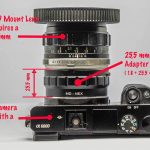
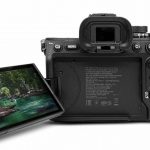
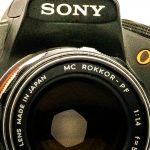



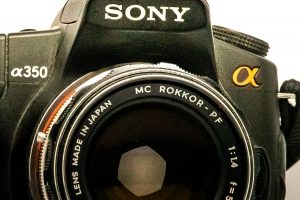
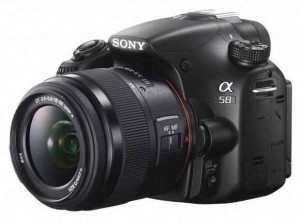
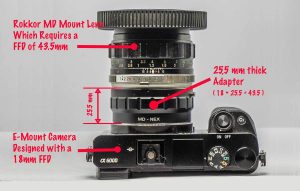

Now we can see!
http://www.sony.co.uk/staticcontent/flashprojects/dime/alpha_microsite_a700/index.html
Isn’t it bettet to power the a100 with aa batteries that can be recharged or bought?Xti designed a grip to enclose it.Kills 2 birds with one stone!
I love your blog. I am trying to get into modelling, do you have any good tips for me?
Hello, possibly our entry is off topic but anyhow, Having gone browsing around your site and it appears genuinely awesome. It’s obvious you know the topic and you seem fervent about it. I’m setting up a fresh web site plus I am struggling to make it look great, and also provide high quality subject matter. I have discovered much at this site plus I anticipate more quality content and will be coming back soon. Many thanks.
What a helpful post. Really will be coming back to this time and time again. Thanks ..
Ten A100 flaws Sony may fix with their new dSLR | Alphatracks
Great post, it was quite handy and helped me quite a bit